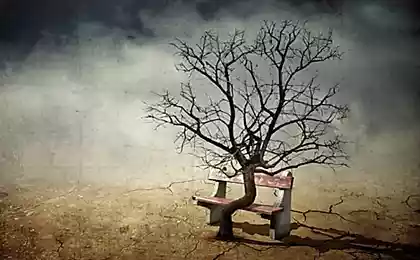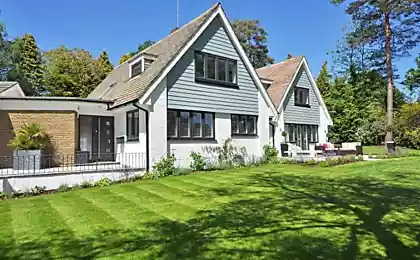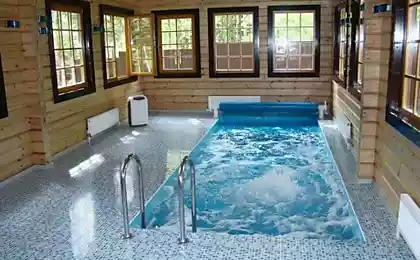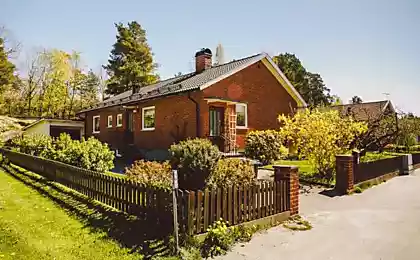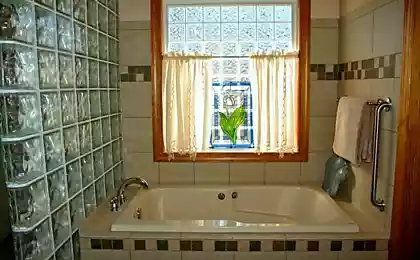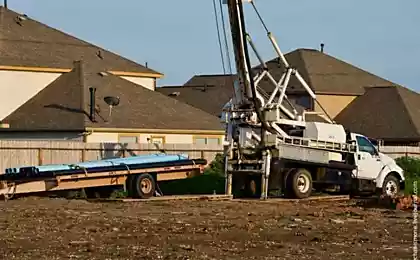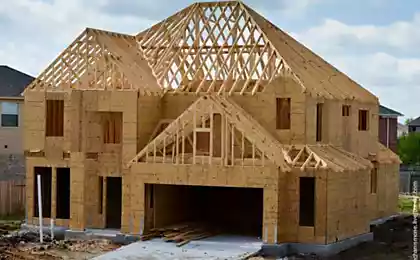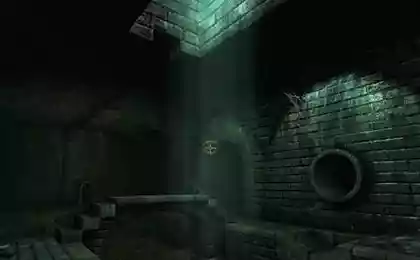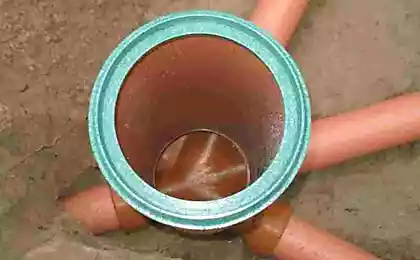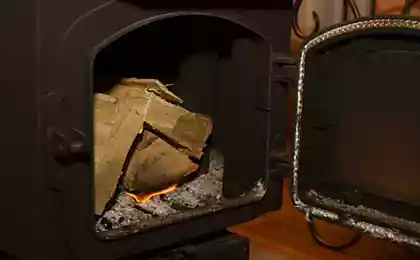779
Basic principles of planning of engineering communications in a private home
The comfort of living in a country house depends on all engineering systems and communications electricity and water supply, heating and Sewerage. Moreover, work efficiency, durability and trouble-free operation "of ingeneri" depends on its proper design and quality installation.
In this article we will answer the following questions:
Planning of engineering communications
Construction practice shows that systems engineering is one of the most expensive components in a country house. Depending on the value of the selected equipment, method of installation, as well as options of laying price "of ingeneri" may account for 25-40% of the total budget for building a house. Therefore, any error committed at the stage of selecting or laying engineering systems, will lead in the future to re-work and costly repairs.
Remember the main rule: the selection and installation of engineering systems of a country house precedes the design phase, which begins with careful planning.Respecting this principle will help to avoid mistakes. For example, if the selected Foundation is a monolithic slab, or in the future on the basis of strip Foundation plans to make the floors on the ground, the input of communications in the building (water, sewer) must be designed in advance. Otherwise, after the construction of the box house will have to wrestle with where and how to enter engineering network, until the alteration/drilling Foundation or technical gouging holes in the screed with a hammer.
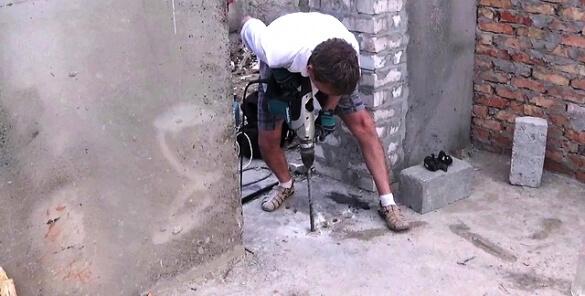
In the absence of sufficient funds, it is possible to install the utility systems gradually stretching this process for a long time. But mortgages under water and sewer pipes, the electrician (if you plan to enter the underground) channels, and holes in the Foundation, ceilings and walls provided in advance. This will avoid the significant financial and labor costs with further work on the installation "ingeneri".
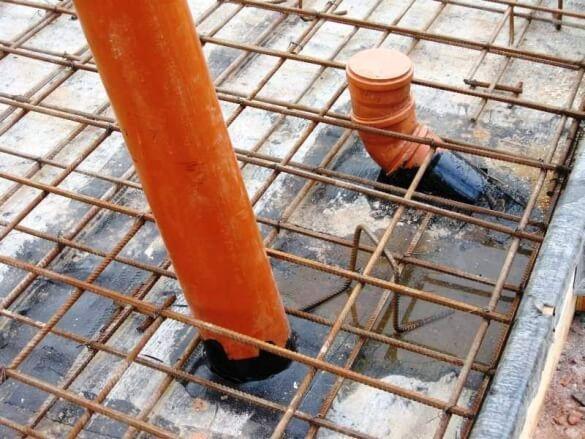
So, we decided that the project is a database of construction of engineering communications. The question arises: how to plan everything? To answer, you can split your actions into a series of sequential steps, moving from General to specific. To not to forget anything, take a sheet of paper and write down what we need to do, namely:
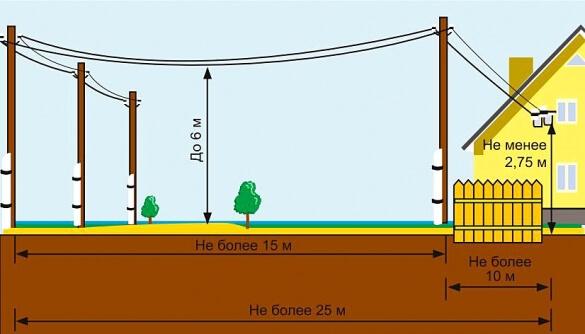
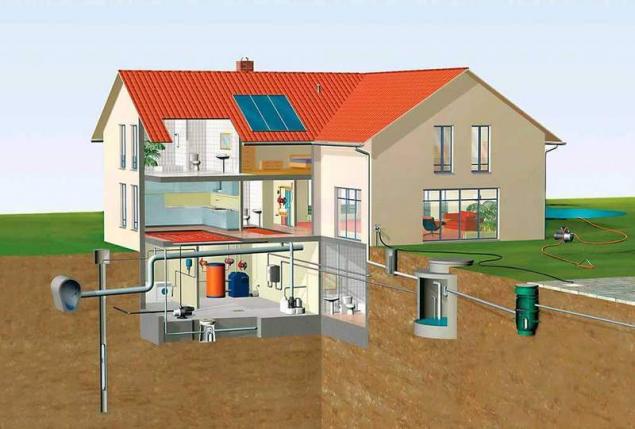
This is just a General, basic data on the basis of which to make pre-project design of engineering networks. Every detail is important. If something is overlooked, then later, for example, having decided to do landscaping or build an outbuilding, it turns out that this place is buried an electrical cable, a water pipe or a septic tank with field filtration.
Based on this, when it comes to planning and further design of engineering networks, just think what and where you plan to do. Ie "inzhenerki" is a compromise between functionality, reliability, aesthetics laid communications and reasonable sufficiency without excessively complicating the system.
The nuances of engineering services
The starting point for the design engineering services to prioritize. Only deal with one task, move on to the next, not trying to cover everything at once.
First, based on what the normal functioning of a country house, it has electricity and water. Ie, a reliable source of water and electricity, and for their insertion and withdrawal for consumers – utilities. Moreover, the electricity and water required at the stage of construction of a cottage.
Although to build a country house, using a gasoline generator and delivered water, but it greatly complicates construction work.
If the electricity is supplied centrally from the power company, reliable source of water in most cases is the concern of the landlord.Water can be extracted from a well or from the well. And well, depending on the depth of occurrence of aquifers and of soil structure, can be drilled "on the sand", or settling a full-fledged, but also the most expensive artesian, clogged or in the house/box shallow budget "Abyssinian".
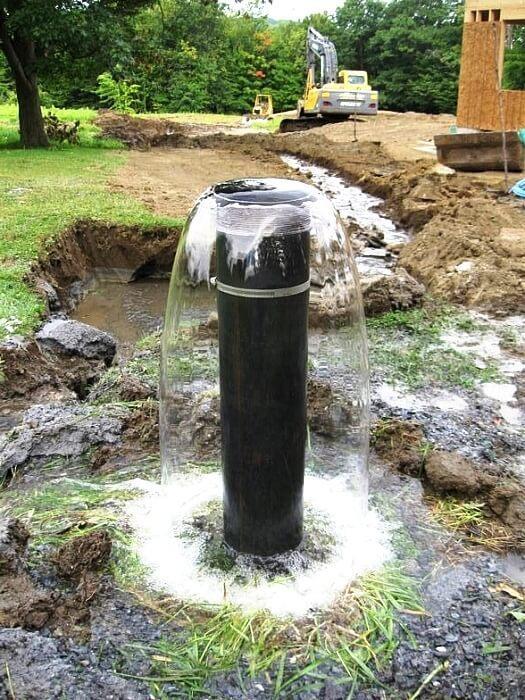
Therefore, immediately, on an initial planning stage, we figure out where to take the water, as it will wind up in the house, which will accommodate pumping equipment. For example, inside the house, in the utility room or boiler room. Or directly over the bore is arranged in the caisson with water intake equipment, and have the plumbing put in the house.
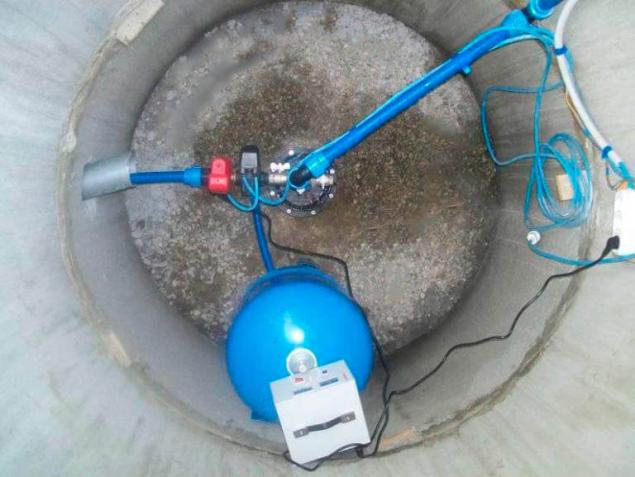
Based on this information, and by determining where on the plot to place the house, we can calculate the distance of the alignment from the intake point to the point of entry to the house duct. Depending on the region of residence and depth of soil freezing (e.g., MO about 1.5 m), we figure out how deep to install the pipe so that in winter it does not freeze.
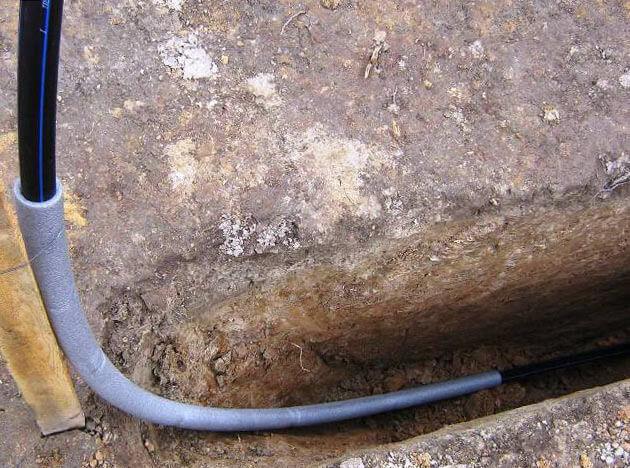
If the pipes are laid above the depth of soil freezing, it is necessary to provide the installation of heating cable or insulation. For example, a heat insulator for pipe "fur" made of polyethylene foam or polystyrene foam "shell".It is important to determine the point of entry in advance. If the pipeline would pass under the Foundation slab and out through the horizontal plane, it is necessary to provide (at the stage of the Foundation design) keel laying pipe. A similar effect with a basement or recessed ribbon Foundation, with the only difference that the pipeline passes horizontally through the Foundation wall.
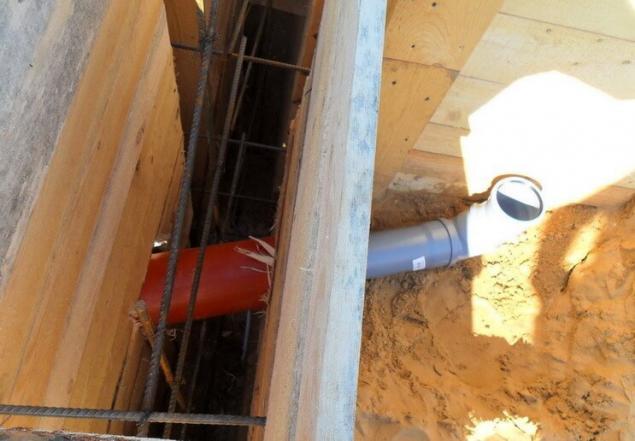
Traditionally, the bottleneck input water line to the house is sinking through the Foundation. This place need to be sealed, and to make it so that the tubing is not crushed in case of a shift/settling of the Foundation.
As a passing liner can be used a metal pipe, the inner diameter of which is 2 times greater than the external diameter of a water or sewer pipe. The sleeve with the pipe mounted on two sides incorporates moisture resistant, rot proof material, compensating a possible shift of the structure. For example, a ropey — tar rope, flax, jute or hemp.
The site of such excavation demonstrates the following figure.
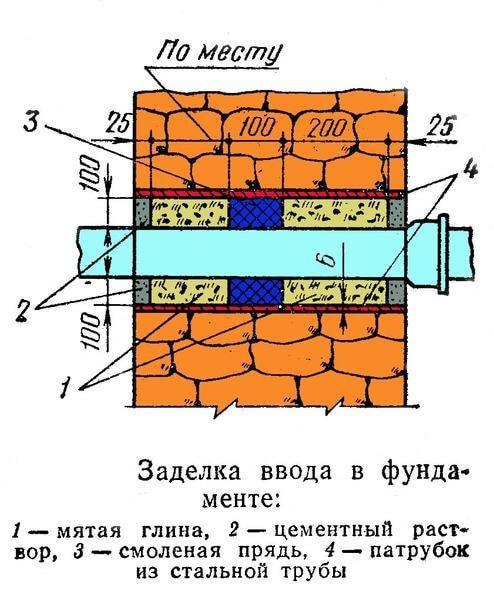
During the laying of a sewer pipe considering several factors. It is the depth of soil freezing, the type of septic tank or the local sewage treatment plant, the value of the slope on the plot, distance from the septic tank to the house.
The recommended slope of the sewage pipe with a diameter of 110 mm is 2 cm by 1 meter.Not advised to combine the input cable to the house (if the electricity is planned to introduce underground) water and sewer pipes. To enter cable mount individual mortgage pipe that goes into the room where the electrical panel is mounted.

So, take a plan of the premises and mark on it where and how much is expected of sockets, switches, lamps, etc. mark the points with virtual furniture arrangement. Otherwise later you may find that mounted the socket will close the sofa or Cabinet.
Also count the number of other consumers. This — boilers, pumps, street lighting baths or saunas, all the bulbs etc. then draw the structural diagram of the electrical and the calculated total power consumption of all equipment. Based on this calculation it will be possible to choose the types and cable cross-sections and calculate equipment electrical switchboards. After that, choose a place for placing electric distribution boards, terminal boxes and cable runs. Note them on the plan. Next, select equipment and calculate the length of cables. Then acquired all the necessary and do the editing.
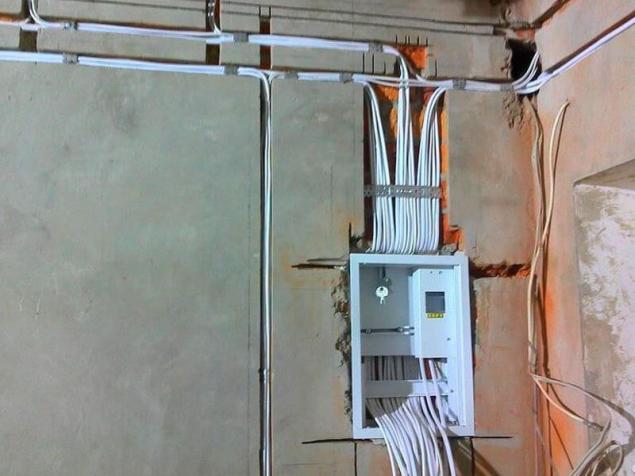
Summing up
Ideally, engineering engineering system should be able to look at them as through the eyes of the designer, and the eyes of the installer, taking into account the material from which built the house — wood, concrete, brick, frame construction, etc., Because the material properties and design of the house directly affect the ways and the complexity of laying engineering communications.
For example, aerated concrete is easy stroitsa simple hand tools, and for laying the route of the pipeline or mains in warm bricks or ceramics will have to use a power tool.

Paving communication in Brusova or log house, you need to consider shrinkage of wood below the track, the pipelines and cables are not peragallo after 1-2 years. The frame house is convenient to hide lines of communication for interior decoration.
Construct the house and Foundation also affect the methods of installation of utilities. If there is a cellar, sewer pipe and water lines can hold in it.
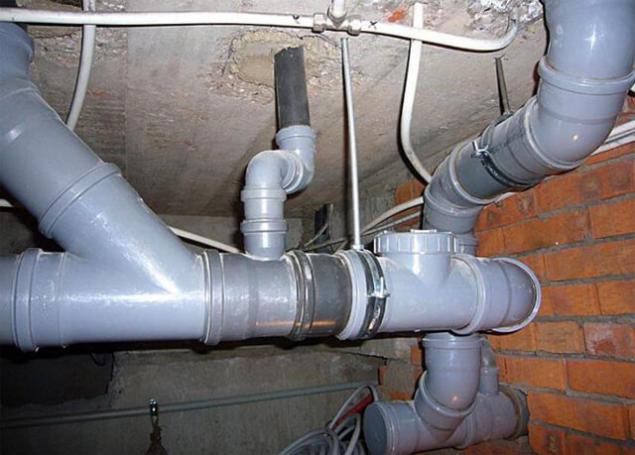
During the construction of weakly deepened Foundation (MSLF) water and sewer pipes are laid under the sole of the tape provided that the soil is not collapsible. Next, the tubing is put inside the perimeter of the Foundation, rises vertically and passes through the overlap. When construction on the ground floor to preserve the continuity of the vapor - and waterproofing layer wind it on the pipe, the thickness of the screed. published
Source: www.forumhouse.ru/articles/engineering-systems/7081
In this article we will answer the following questions:
- How to begin planning for utilities.
- What nuances enter into the house of sewer, water and electrics need to pay attention in the first place.
- As the structural elements of the house influences the characteristics of the laying of utilities.
Planning of engineering communications
Construction practice shows that systems engineering is one of the most expensive components in a country house. Depending on the value of the selected equipment, method of installation, as well as options of laying price "of ingeneri" may account for 25-40% of the total budget for building a house. Therefore, any error committed at the stage of selecting or laying engineering systems, will lead in the future to re-work and costly repairs.
Remember the main rule: the selection and installation of engineering systems of a country house precedes the design phase, which begins with careful planning.Respecting this principle will help to avoid mistakes. For example, if the selected Foundation is a monolithic slab, or in the future on the basis of strip Foundation plans to make the floors on the ground, the input of communications in the building (water, sewer) must be designed in advance. Otherwise, after the construction of the box house will have to wrestle with where and how to enter engineering network, until the alteration/drilling Foundation or technical gouging holes in the screed with a hammer.

In the absence of sufficient funds, it is possible to install the utility systems gradually stretching this process for a long time. But mortgages under water and sewer pipes, the electrician (if you plan to enter the underground) channels, and holes in the Foundation, ceilings and walls provided in advance. This will avoid the significant financial and labor costs with further work on the installation "ingeneri".

So, we decided that the project is a database of construction of engineering communications. The question arises: how to plan everything? To answer, you can split your actions into a series of sequential steps, moving from General to specific. To not to forget anything, take a sheet of paper and write down what we need to do, namely:
- To determine where on the site will be home to reside outbuildings, garage and a well/borehole and septic tank, to determine the length of the supply line relative to existing or planned utilities building.
- To fathom the distance from the pillar, which supplied electricity to the house. If the distance exceeds 25 m, it would require the installation of another interim post, or, alternatively, you can enter the underground cable to the house.

- Depending on the area of the house, thermal loss and heating method, the points of demand, the number of residents and their preferences considering the amount of water and energy consumption.
- Calculated the anticipated load from all power consumers, because of these data depends on the selection of cables and protective devices.
- Determined by the place in the house, where should be the installation of the equipment.
- Expect, how to lay line (open or closed method in strobach) as they will wind up in the room. How to implement tunneling through walls and floors.
- In the case of the installation on their own, choosing materials and equipment, installation of engineering systems. Or, determine your preferences, order the project in specialized organizations

This is just a General, basic data on the basis of which to make pre-project design of engineering networks. Every detail is important. If something is overlooked, then later, for example, having decided to do landscaping or build an outbuilding, it turns out that this place is buried an electrical cable, a water pipe or a septic tank with field filtration.
Based on this, when it comes to planning and further design of engineering networks, just think what and where you plan to do. Ie "inzhenerki" is a compromise between functionality, reliability, aesthetics laid communications and reasonable sufficiency without excessively complicating the system.
The nuances of engineering services
The starting point for the design engineering services to prioritize. Only deal with one task, move on to the next, not trying to cover everything at once.
First, based on what the normal functioning of a country house, it has electricity and water. Ie, a reliable source of water and electricity, and for their insertion and withdrawal for consumers – utilities. Moreover, the electricity and water required at the stage of construction of a cottage.
Although to build a country house, using a gasoline generator and delivered water, but it greatly complicates construction work.
If the electricity is supplied centrally from the power company, reliable source of water in most cases is the concern of the landlord.Water can be extracted from a well or from the well. And well, depending on the depth of occurrence of aquifers and of soil structure, can be drilled "on the sand", or settling a full-fledged, but also the most expensive artesian, clogged or in the house/box shallow budget "Abyssinian".

Therefore, immediately, on an initial planning stage, we figure out where to take the water, as it will wind up in the house, which will accommodate pumping equipment. For example, inside the house, in the utility room or boiler room. Or directly over the bore is arranged in the caisson with water intake equipment, and have the plumbing put in the house.

Based on this information, and by determining where on the plot to place the house, we can calculate the distance of the alignment from the intake point to the point of entry to the house duct. Depending on the region of residence and depth of soil freezing (e.g., MO about 1.5 m), we figure out how deep to install the pipe so that in winter it does not freeze.

If the pipes are laid above the depth of soil freezing, it is necessary to provide the installation of heating cable or insulation. For example, a heat insulator for pipe "fur" made of polyethylene foam or polystyrene foam "shell".It is important to determine the point of entry in advance. If the pipeline would pass under the Foundation slab and out through the horizontal plane, it is necessary to provide (at the stage of the Foundation design) keel laying pipe. A similar effect with a basement or recessed ribbon Foundation, with the only difference that the pipeline passes horizontally through the Foundation wall.

Traditionally, the bottleneck input water line to the house is sinking through the Foundation. This place need to be sealed, and to make it so that the tubing is not crushed in case of a shift/settling of the Foundation.
As a passing liner can be used a metal pipe, the inner diameter of which is 2 times greater than the external diameter of a water or sewer pipe. The sleeve with the pipe mounted on two sides incorporates moisture resistant, rot proof material, compensating a possible shift of the structure. For example, a ropey — tar rope, flax, jute or hemp.
The site of such excavation demonstrates the following figure.

During the laying of a sewer pipe considering several factors. It is the depth of soil freezing, the type of septic tank or the local sewage treatment plant, the value of the slope on the plot, distance from the septic tank to the house.
The recommended slope of the sewage pipe with a diameter of 110 mm is 2 cm by 1 meter.Not advised to combine the input cable to the house (if the electricity is planned to introduce underground) water and sewer pipes. To enter cable mount individual mortgage pipe that goes into the room where the electrical panel is mounted.

So, take a plan of the premises and mark on it where and how much is expected of sockets, switches, lamps, etc. mark the points with virtual furniture arrangement. Otherwise later you may find that mounted the socket will close the sofa or Cabinet.
Also count the number of other consumers. This — boilers, pumps, street lighting baths or saunas, all the bulbs etc. then draw the structural diagram of the electrical and the calculated total power consumption of all equipment. Based on this calculation it will be possible to choose the types and cable cross-sections and calculate equipment electrical switchboards. After that, choose a place for placing electric distribution boards, terminal boxes and cable runs. Note them on the plan. Next, select equipment and calculate the length of cables. Then acquired all the necessary and do the editing.

Summing up
Ideally, engineering engineering system should be able to look at them as through the eyes of the designer, and the eyes of the installer, taking into account the material from which built the house — wood, concrete, brick, frame construction, etc., Because the material properties and design of the house directly affect the ways and the complexity of laying engineering communications.
For example, aerated concrete is easy stroitsa simple hand tools, and for laying the route of the pipeline or mains in warm bricks or ceramics will have to use a power tool.

Paving communication in Brusova or log house, you need to consider shrinkage of wood below the track, the pipelines and cables are not peragallo after 1-2 years. The frame house is convenient to hide lines of communication for interior decoration.
Construct the house and Foundation also affect the methods of installation of utilities. If there is a cellar, sewer pipe and water lines can hold in it.

During the construction of weakly deepened Foundation (MSLF) water and sewer pipes are laid under the sole of the tape provided that the soil is not collapsible. Next, the tubing is put inside the perimeter of the Foundation, rises vertically and passes through the overlap. When construction on the ground floor to preserve the continuity of the vapor - and waterproofing layer wind it on the pipe, the thickness of the screed. published
Source: www.forumhouse.ru/articles/engineering-systems/7081




